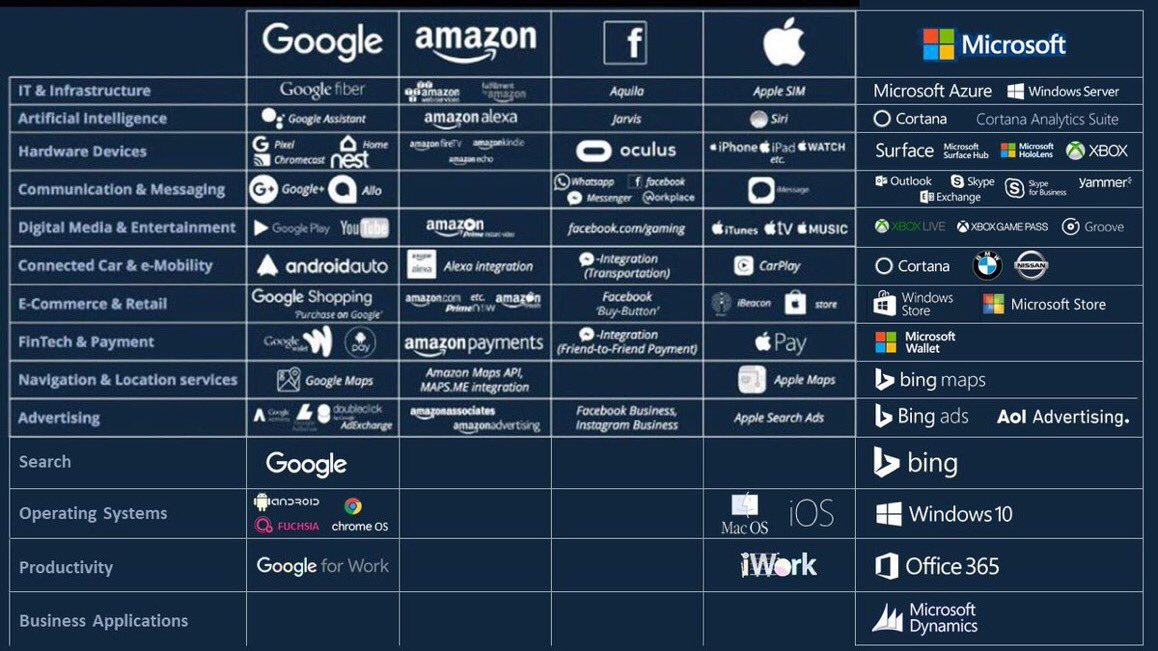 |
| Source: Tech Influence |
Today there are five tech giants that include Facebook, Google, Amazon, Apple, and Twitter. These companies are having a growing influence on how society thinks about hot button political issues and other things in daily life. The Guardian argues that these companies are too powerful because their secretive products have the ability to influence millions of people's political and educational decisions.
For example Google has been accused by the President and other people of rigging search results to a more left wing political view. Which is a scary thing because this means a single company has a huge influence over American elections. What people research will a lot of the time determine the way they vote and if you have a company rigging search results to favor a certain party our democracy is at stake. But according to the Guardian, there is no way to confirm this because of how secret Google’s search algorithms are, and they also constantly change they so it would be really hard to actually prove this so for now it in just speculation.
These companies also only work towards their agenda, for example Apple and Google have lobbied very hard to get their products in schools to help students learn or so they say, according to a Washington Post article kids actually have a much harder time learning material from computers because a lot of teachers not all but a lot think they can just assign work on the computer and their work is done. They don’t actually teach anything after they assign this work and kids are just left more confused. The leaders of these companies know this too, according to a Matt Richel of the New York Times of people who are executives of Silicon Valley companies send their children to the Waldorf school that does not allow technology they only allow paper and pencil learning. The heads of these companies preached that technology is the savior of American Education that will make kids so much smarter when they know that is a lie. They don’t even allow their own children to be exposed to technology in school. They changed American society form pencil and paper to all computers not because it in beneficial but so they can sell more products.
Future Research Question:
For example Google has been accused by the President and other people of rigging search results to a more left wing political view. Which is a scary thing because this means a single company has a huge influence over American elections. What people research will a lot of the time determine the way they vote and if you have a company rigging search results to favor a certain party our democracy is at stake. But according to the Guardian, there is no way to confirm this because of how secret Google’s search algorithms are, and they also constantly change they so it would be really hard to actually prove this so for now it in just speculation.
These companies also only work towards their agenda, for example Apple and Google have lobbied very hard to get their products in schools to help students learn or so they say, according to a Washington Post article kids actually have a much harder time learning material from computers because a lot of teachers not all but a lot think they can just assign work on the computer and their work is done. They don’t actually teach anything after they assign this work and kids are just left more confused. The leaders of these companies know this too, according to a Matt Richel of the New York Times of people who are executives of Silicon Valley companies send their children to the Waldorf school that does not allow technology they only allow paper and pencil learning. The heads of these companies preached that technology is the savior of American Education that will make kids so much smarter when they know that is a lie. They don’t even allow their own children to be exposed to technology in school. They changed American society form pencil and paper to all computers not because it in beneficial but so they can sell more products.
Future Research Question:












/cdn.vox-cdn.com/uploads/chorus_image/image/58550219/GettyImages_480792045.0.jpg)






